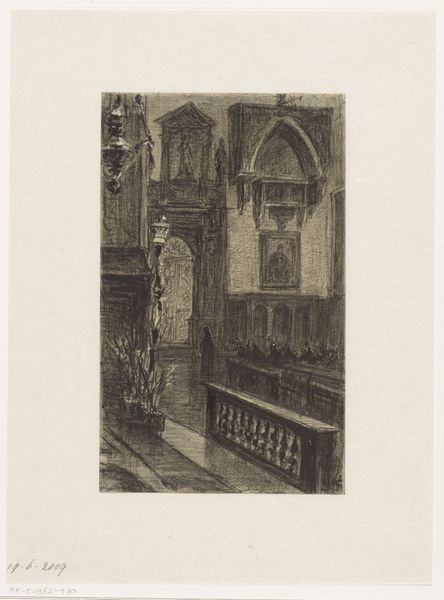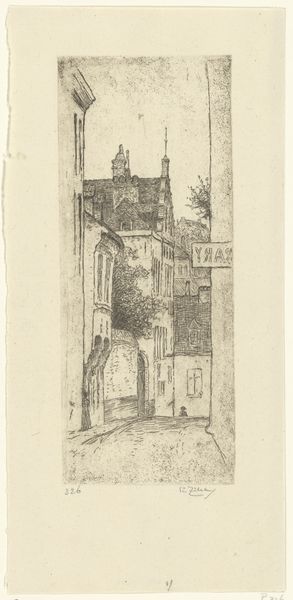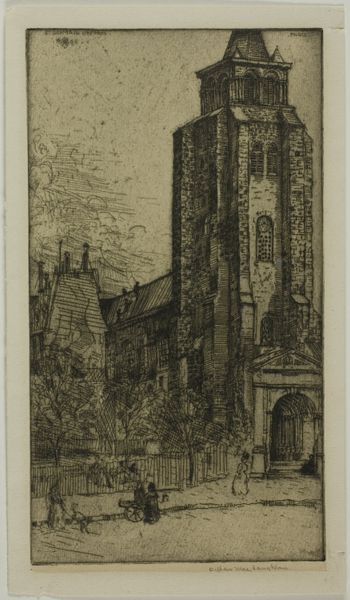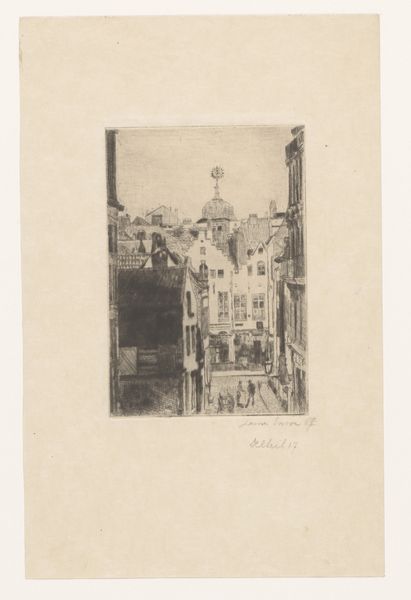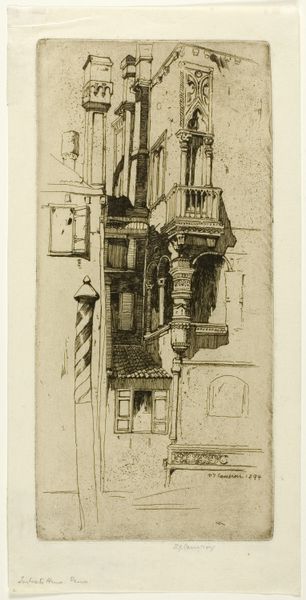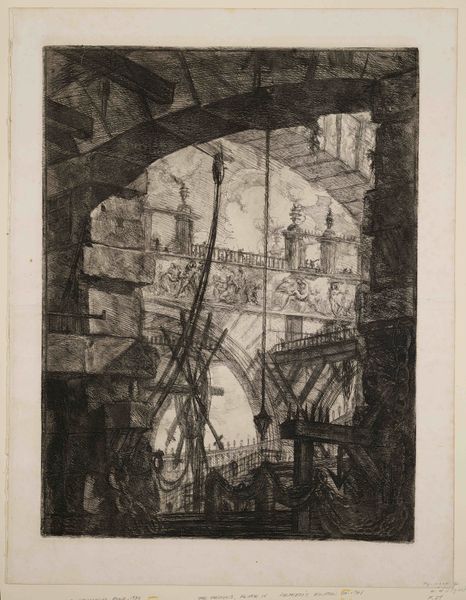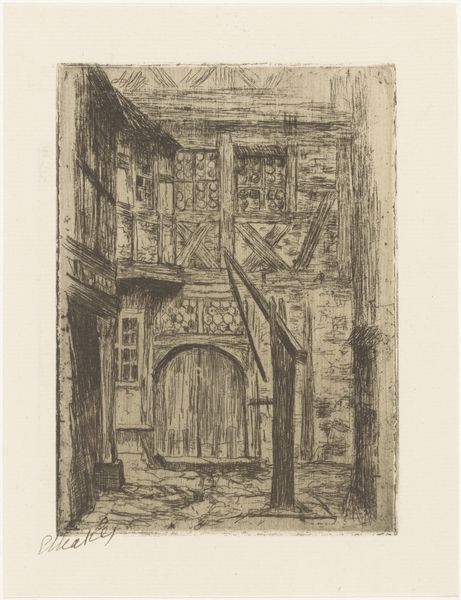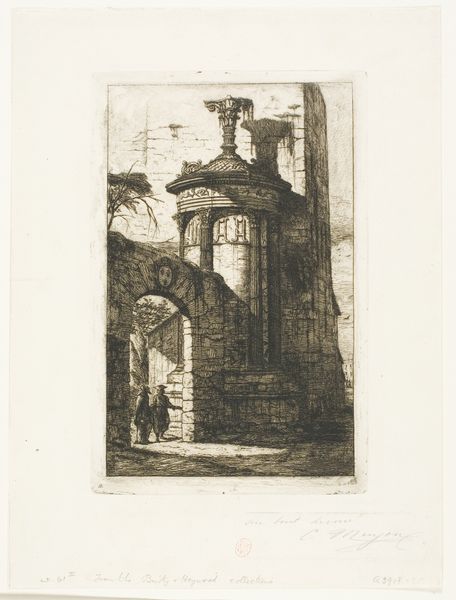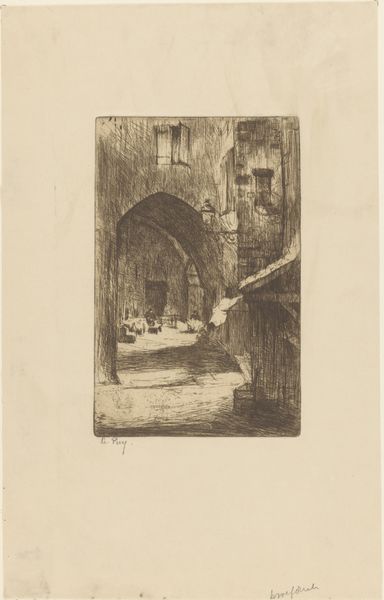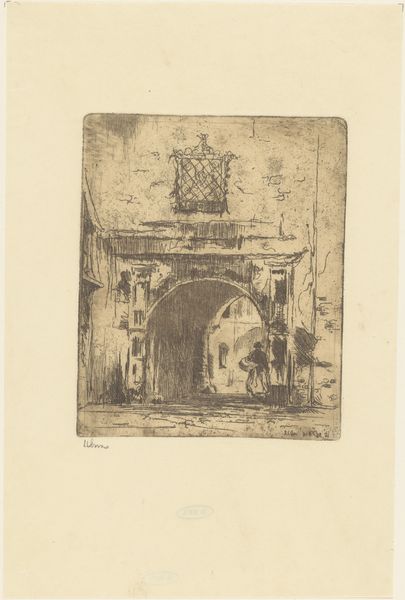
drawing, print, etching, paper, engraving
#
drawing
# print
#
etching
#
landscape
#
charcoal drawing
#
paper
#
cityscape
#
engraving
Dimensions: 201 × 105 mm (image/plate); 233 × 130 mm (sheet)
Copyright: Public Domain
Editor: We're looking at Donald Shaw MacLaughlan's "Portal of the Ducal Palace, Venice" from 1899, a print made using etching and engraving. It feels incredibly imposing, like a gateway to another world. What strikes you about this piece? Curator: The architectural grandeur, certainly, but I'm also drawn to what it *represents.* Venice, at the turn of the century, was a city caught between its glorious past and an uncertain future. MacLaughlan's choice to focus on this portal, a liminal space, speaks to that transition. Editor: A liminal space… I like that. It’s like Venice itself is caught in the doorway. Curator: Exactly. Think about the Ducal Palace itself: originally a fortress, later a political center, and ultimately a museum. This portal served different purposes for different groups over time. Who was allowed through and who was kept out? What stories do those bricks hold regarding wealth, privilege, and exclusion? Editor: So, it's not just a beautiful building; it's a reflection of the power structures within Venetian society. Curator: Precisely. The heavy shadows and intricate details are not just aesthetic choices; they highlight the complexity and perhaps the opaqueness of power. How does this knowledge change your initial perception? Editor: It makes me think of who *isn't* pictured here. The Doge's Palace is such a recognizable image; you're sort of used to only thinking of Venice a certain way. Curator: And MacLaughlan’s art prods us to question that ‘certain way,’ to unpack the layers of history and understand the lived experiences obscured by the picturesque façade. It's an invitation to challenge dominant narratives. Editor: I never considered looking at it that way before. Now, the shadows feel less like an aesthetic choice and more like… a deliberate hiding of something. Thank you for sharing your insight. Curator: And thank you for your thoughtful observation. These old buildings are not relics but dynamic texts. They urge us to reread their past, present, and futures through the lens of power and its ever-shifting boundaries.
Comments
No comments
Be the first to comment and join the conversation on the ultimate creative platform.
